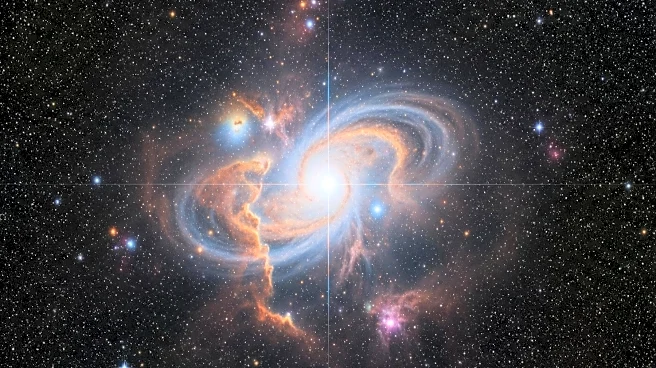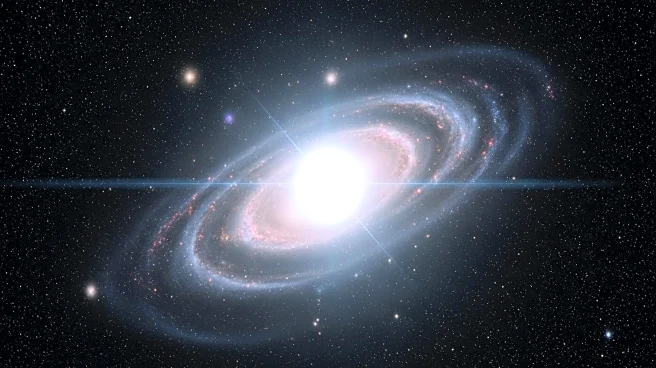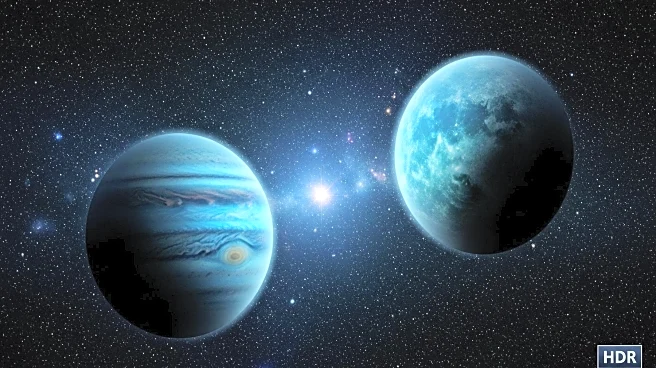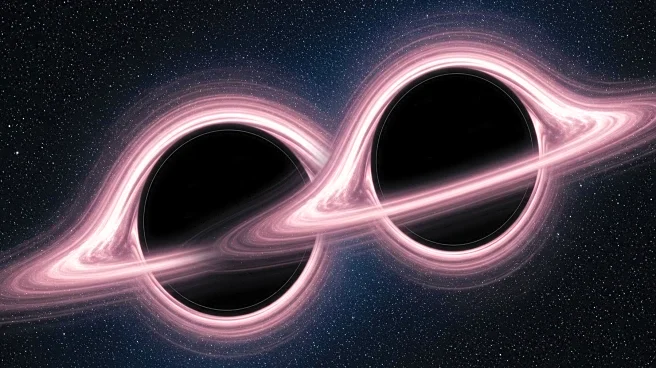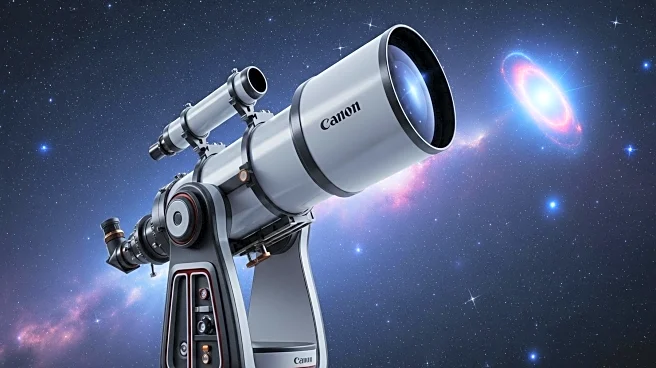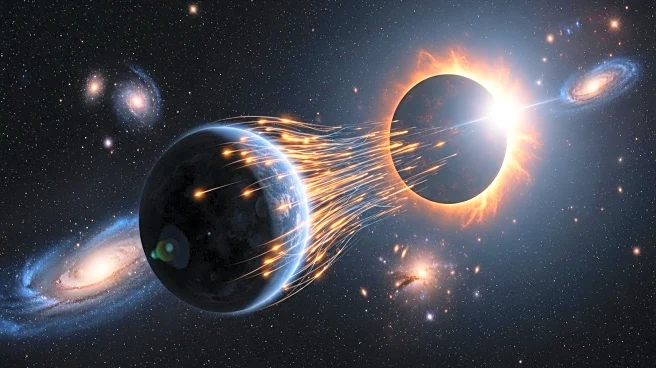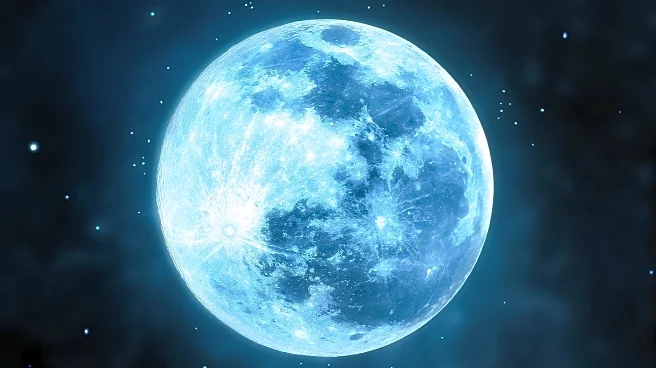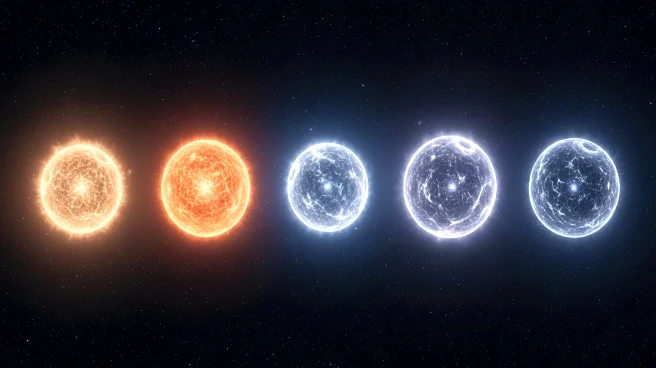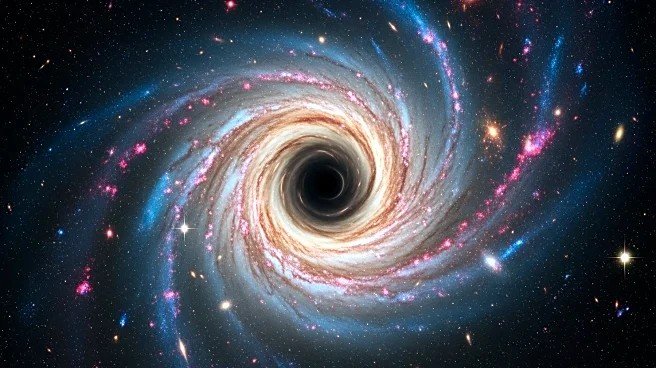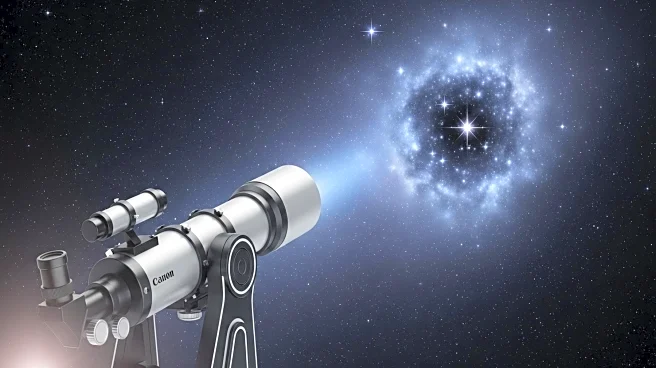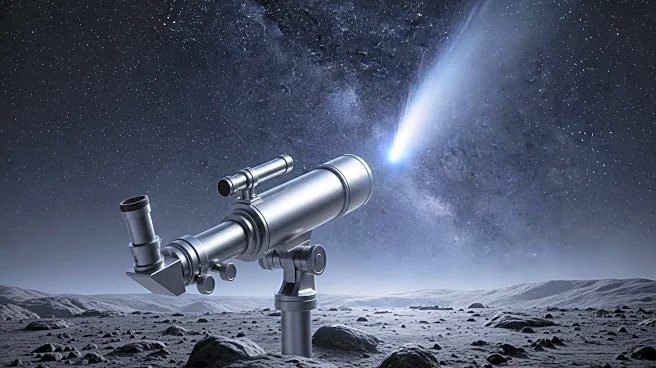What's Happening?
The James Webb Space Telescope (JWST) has captured images of a massive red supergiant star on the brink of a supernova, potentially solving a decades-old mystery in astrophysics. The star, located in the galaxy NGC 1637, was observed just before its explosion, providing unprecedented data on the characteristics and environment of red supergiants. This discovery sheds light on why these stars, despite being expected to cause most supernovas, are rarely observed. The JWST's infrared capabilities allowed researchers to see through the dust that typically obscures these stars, revealing their true nature and luminosity.
Why It's Important?
This observation is significant for the field of astrophysics as it provides crucial insights into the lifecycle of massive stars and the conditions leading to supernovae. Understanding the behavior of red supergiants can help refine models of stellar evolution and improve predictions of supernova events. The data obtained from JWST also highlights the importance of advanced infrared technology in overcoming observational challenges posed by cosmic dust. This breakthrough has implications for future research on star formation and the dynamics of galaxies, potentially influencing theories about the universe's expansion and evolution.
What's Next?
Researchers will continue to analyze the data from JWST to further understand the properties of red supergiants and their role in cosmic events. The findings may lead to new studies on the impact of dust on stellar observations and the development of more sophisticated models of star behavior. Collaborative efforts between astronomers and astrophysicists will be essential in exploring the implications of this discovery. Future missions may focus on identifying and studying other 'doomed' stars, expanding our knowledge of the universe's most dramatic phenomena.
Beyond the Headlines
The discovery of the 'doomed' star underscores the transformative power of modern telescopes like JWST in advancing our understanding of the cosmos. It highlights the importance of investing in space exploration and technology to uncover the mysteries of the universe. The event also serves as a reminder of the interconnectedness of scientific disciplines, as advancements in technology drive progress in astronomy and astrophysics.
